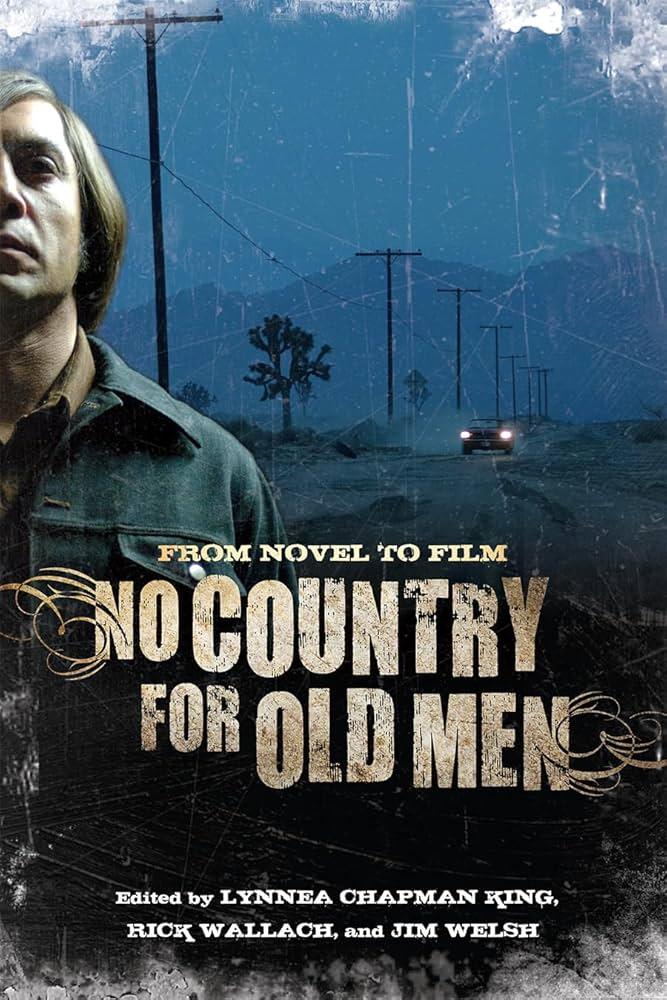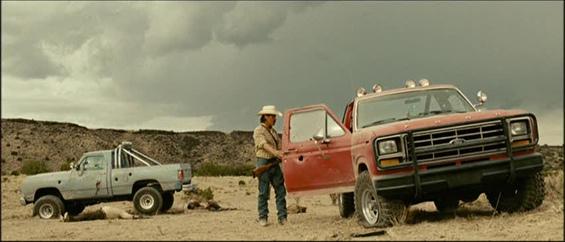In the realm of contemporary cinema, few films have achieved the enduring impact and critical acclaim of ”No Country for Old Men.” Directed by Joel and Ethan Coen, this 2007 adaptation of Cormac McCarthy’s novel is widely regarded as a masterclass in crafting tension and atmosphere. Set against the stark backdrop of the Texas desert, the film weaves a narrative that is as relentless as it is thought-provoking, exploring themes of fate, morality, and the inexorable passage of time. This article delves into the cinematic techniques and narrative strategies employed by the Coen brothers to create a palpable sense of unease and suspense, examining how their meticulous attention to detail and innovative storytelling contribute to the film’s status as a modern classic. By dissecting the film’s use of sound, cinematography, and character development, we aim to understand how “No Country for Old Men” not only captivates its audience but also leaves an indelible mark on the landscape of thriller cinema.
Crafting Cinematic Tension Through Visual Storytelling
In No Country for Old Men, the Coen brothers masterfully employ visual storytelling to craft an atmosphere thick with tension. The film’s visual language is meticulously constructed to maintain a taut narrative rhythm. Roger Deakins‘ cinematography plays a pivotal role in this, using stark landscapes and shadowy interiors to evoke a sense of impending danger. The use of wide shots allows the audience to absorb the desolate beauty of the Texan landscape, while close-ups draw us into the characters’ silent, internal struggles. This contrast not only highlights the isolation of the characters but also underscores the relentless pursuit that defines the film.
Key visual elements contribute to the pervasive tension throughout the movie:
- Lighting and Shadows: Low-key lighting accentuates the film’s themes of moral ambiguity and uncertainty.
- Color Palette: Muted tones reflect the bleakness of the narrative, enhancing the feeling of inevitability.
- Camera Movement: Slow pans and still shots maintain a deliberate pace, building suspense as the story unfolds.
- Symbolic Imagery: Recurrent motifs, such as the barren landscapes and the ever-present wind, symbolize the inexorable passage of time and fate.
Through these techniques, the Coen brothers create a visual symphony that keeps viewers on edge, illustrating how effective visual storytelling can elevate cinematic tension to an art form.

The Role of Sound Design in Amplifying Suspense
In No Country for Old Men, sound design plays a pivotal role in crafting the film’s pervasive sense of suspense. Silence, often overlooked, is used masterfully to heighten tension. The absence of a traditional musical score allows the audience to focus on the stark, unsettling ambient sounds that fill the void. Footsteps, the rustle of clothing, and the echo of gunshots become amplified, creating an atmosphere of unease and unpredictability.
- Environmental Sounds: The subtle hum of a distant wind or the creak of a floorboard intensifies the feeling of isolation and vulnerability.
- Character-Driven Soundscapes: Each character’s presence is marked by distinct auditory cues, such as the ominous hiss of Anton Chigurh’s captive bolt pistol, adding layers to their on-screen persona.
- Dynamic Silence: Moments of complete silence are strategically placed to accentuate critical scenes, making the viewer hyper-aware of every small sound that follows.
These elements work in tandem to build a soundscape that doesn’t just accompany the visuals but transforms them, engaging the audience on a deeper, more visceral level. The Coen Brothers’ deliberate use of sound creates a haunting tension that lingers long after the film concludes.
Character Dynamics and Their Contribution to the Films Atmosphere
The intricate interplay of characters in “No Country for Old Men” is pivotal in crafting the film’s haunting atmosphere. At the center is Anton Chigurh, whose relentless and cold demeanor instills a pervasive sense of dread. His interactions are marked by a chilling calmness, juxtaposed against the chaotic world he navigates. Chigurh’s character serves as a vessel of existential menace, making every scene he inhabits heavy with tension. Llewelyn Moss, on the other hand, represents the everyman thrust into extraordinary circumstances, his desperate attempts to evade Chigurh adding layers of suspense. His actions are often driven by instinct, creating a palpable uncertainty that keeps viewers on edge.
The supporting characters further enhance the film’s atmosphere by offering contrasting perspectives and moral complexities. Consider Sheriff Ed Tom Bell, whose reflective and weary demeanor provides a poignant counterbalance to the brutality surrounding him. His dialogues, filled with introspection, underscore the film’s thematic exploration of a world in decline. The dynamic between these characters can be summarized as follows:
- Chigurh vs. Moss: Predator and prey, their cat-and-mouse chase heightens the film’s relentless tension.
- Moss and Carla Jean: Their relationship brings a human element, grounding the narrative amidst the chaos.
- Sheriff Bell’s reflections: Offer a somber lens on morality and the inexorable passage of time.
Through these dynamics, the film constructs an atmosphere where every silence is deafening and every decision carries profound weight.

The Influence of Setting on Narrative Tension
In “No Country for Old Men,” the desolate landscapes of West Texas become a silent yet potent character, amplifying the narrative tension through their stark emptiness and unforgiving nature. The vast, open spaces evoke a sense of isolation and vulnerability, creating a backdrop where the pursuit of power and survival unfolds relentlessly. The barren desert and endless highways are more than mere settings; they symbolize the harsh reality and moral ambiguity that permeate the story. Cinematic elements such as:
- Wide-angle shots that emphasize the expansive, isolating terrain
- The interplay of light and shadow that reflects the inner turmoil of characters
- The absence of a musical score, allowing the ambient sounds to heighten suspense
These elements work cohesively to elevate the tension, making the setting an integral part of the narrative’s fabric. The unforgiving environment mirrors the relentless pursuit between hunter and hunted, reinforcing the notion that in this barren land, there is no escape from the existential dread that looms over every action and decision.
